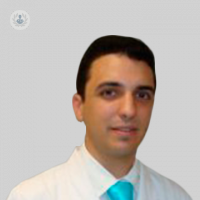End acne? it's possible
Written by:Acne is the appearance of comedones (blackheads) and pustules (pimples with pus), mainly on face and trunk.
There are 4 alterations that, in conjunction, are what end up causing the acne:
- The hair follicles are blocked by an overgrowth of normal skin cells, combined with cutaneous sebum, creating a plug in the follicle.
- The sebaceous glands grow during adolescence, increasing their production of sebum. They are mainly located on the face, neck, chest, upper back and arms.
- The increase of sebum, allows the expansion of the bacterium Propionebacterium acnes (normally present in the skin, but to a lesser extent).
- Inflammation results as a result of excessive bacterial growth or other factors. This can lead to follicle rupture and the formation of an inflammatory nodule or cyst.

Causes
The causes of acne are multiple:
- Hormonal. Due to changes during adolescence, the sebaceous glands increase in size and sebaceous production. In most people the hormone levels are normal but the glands are more sensitive. Less frequently, in women, it may be associated with Polycystic Ovarian Syndrome in women, and it is usually accompanied by other recognizable alterations.
Although usually resolved before age 30, in some people (especially women), it can be prolonged a little more.
- External factors. For the application of creams and products with fats, oils or lipids in their composition. "Oil-free" or "non-comedogenic" products are less likely to worsen acne.
- Diet. The role of diet is controversial. For most patients, diet does not play a significant role. For those who do associate it (they are a minority), the most frequent precipitants are dairy products, red meats and chocolate.
- Stress. Psychological stress also worsens acne. It seems that by increasing manipulation of the affected areas, rather than by the stress per se. In any case, an improvement of the psychological affection, is associated with an improvement of the acne.
How is it treated?
There is no single and best acne treatment. Most patients will require combination treatments for long periods of time (some may take at least 8 weeks to start to be effective). The treatment is individualized according to the type of lesions, the age of the patient and other factors.
- Non-inflammatory acne: usually controlled well with topical products and hygiene.
- Inflammatory acne: Moderate acne is usually treated with a combination of antibiotics for periods of more activity and topical products to maintain the improvement. Severe acne (the nodule-cystic, which has the potential to leave scars) can be treated as moderate acne, but it is more likely to have to be referred to other treatments.
Care Tips for Acne (Food, Hygiene) Patients
Skin care is important for the treatment of acne.
- Hygiene. Wash your face, no more than 2 times a day, using a detergent without specific soap and warm water. Ideally, it should be done with the hands, as towels and sponges tend to harbor bacteria. Washing more or rubbing / exfoliating too thoroughly can worsen acne.
Do not tighten or drain blackheads or pustules, especially with the hands, as the lesions tend to become deeper, more inflammatory and increase the risk of scarring.
- Moisturizers. Always "oil-free" or non-comedogenic. They help to control the dryness and irritation produced by other treatments.
- Photoprotection. Although acne tends to improve in the summer months, it is important to protect it properly from the sun (with SPF 30 or 50 oil-free photoprotectors), since many of the products that are used sensitize the skin to the sun.


